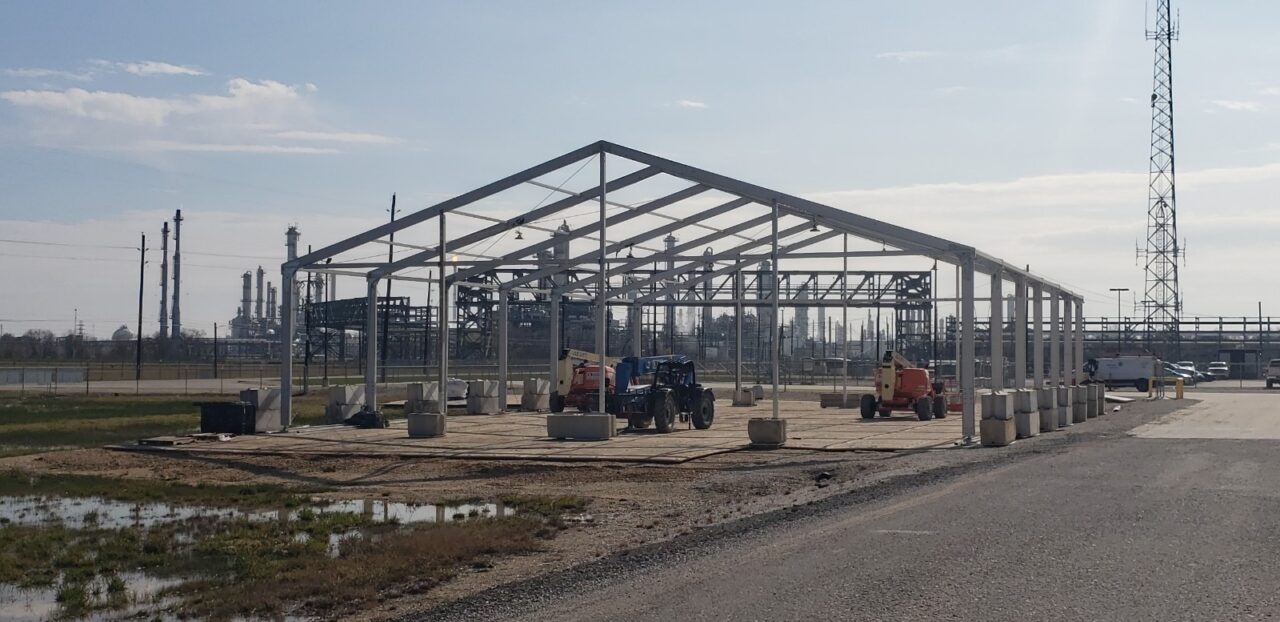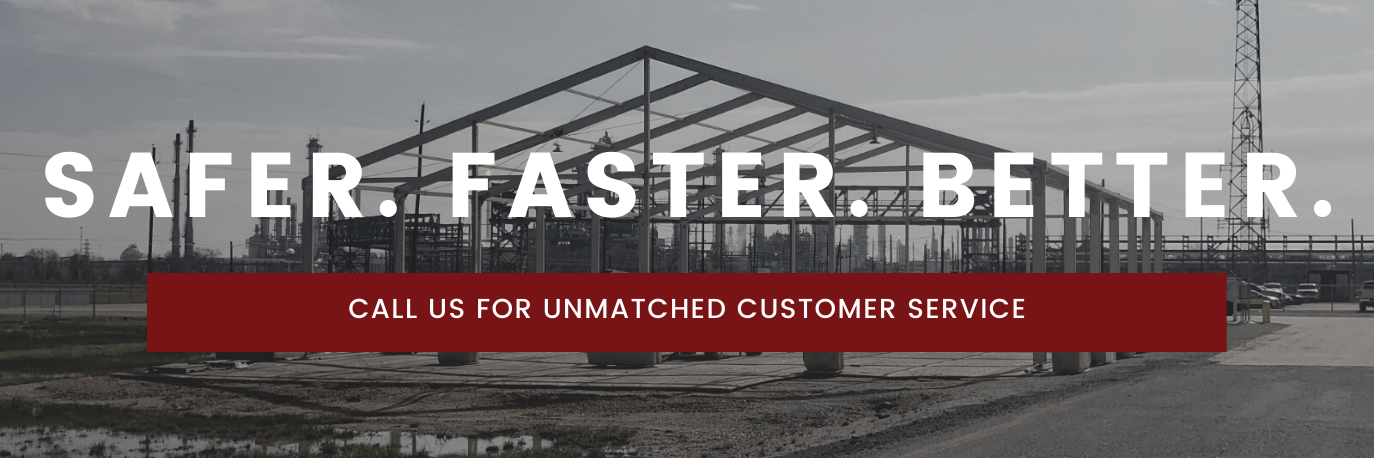If you’re in the oil and gas industry, there will likely come a time where you’ll need comprehensive support to ensure the protection of crews at refineries, petrochemical plants and chemical operations nationwide, safeguarding workers from the risk of explosions, fires and the release of toxic materials. To meet this need, getting innovative, blast resistant shelters designed with the technology required to shelter at-risk workers in potential blast zones is what you’ll want. A go-to solution that most in the industry invest in are temporary blast tent structures.
Blast tents are a cost-effective way to add protected space tailored to your unique needs for a set duration. Getting these types of tenting solutions to protect your teams while in high-risk areas, such as blast zones, can be paramount —and when you get the right team of experts, can serve your needs in all types of foundations, no matter the conditions.
To understand how to get your setup established, you’ll want to start with assessing your foundation.
A foundation serves two main purposes:
- To distribute weight from load-bearing walls to the underlying soil or bedrock
- To repel water or pests
A strong foundation keeps a building standing and protects its occupants when the forces of nature wreak havoc. For permanent buildings, the topography and geology of a construction site and the proposed building’s size determine the foundation type. This process is time-consuming and costly.
Temporary structures, however, can be built on any ground surface. Often, with minimal preparatory work. Constructed from metal framework and weather-resistant fabric surfaces, these impermanent buildings are lightweight and versatile.
As you get into the details of your blast tent’s setup, here are four things to keep in mind.
Your Building’s Purpose
A space’s planned use dictates whether there’s a need to pack soil or lay flooring. Forklift trucks and heavy machinery can benefit from a level surface. Lunch tent and base camp comfort is enhanced when the ground is covered, as dropped food can attract insects and pests. Each project is different and requires distinct needs so having an expert team on your side that can offer versatile blast tents engineered to meet API Recommended Practice 756 and suitable for zones 1-3 is key.
Gravity Prevails
Document how the ground surface responds to the prevailing weather conditions in the area. During rainfall, the likely outcome is puddling or standing water. This can create slip-and-fall hazards, attract insects, and reduce usability. Here are some tips and tricks for creating the best possible foundation:
- Construct a pad where the temporary blast tent will be to prevent moisture intrusion.
- Brick up edges to help minimize water flow.
- Lift the center of the blast tent so that it’s higher than its sides (to direct water down and away).
Almost All Land is Suitable
While it’s important to know how land reacts to the elements, spending countless hours searching for the perfect parcel isn’t necessary. The main advantage of temporary structures (like blast tents) is that installation can occur on various terrains in days or even hours. Blast tents can safely sit atop existing surfaces — e.g. soggy soil, loose sand, broken asphalt, or chipped concrete — without the need for expensive site preparation. Impermanent structures can be built on a grade or slope, with legs adjusted to level the building or tent. (It’s even possible to install a float to match a hill’s slope for vehicles or heavy equipment storage.)
Know the Code
Before your blast tent installation, work with local authorities to decide whether a foundation is necessary. When one is, the authorities can determine where it’s safe to dig. No matter the state, you can call 8-1-1 to “Know What’s Below.” (Experts can visit and adequately mark the area.)
Whether you require extra stability to support oversized loads or need a surface to keep valued personnel and products dry, investing in experts to be on your side is crucial for the success of your project. (The more years of experience, the better your business will be at getting the high-performing blast tent structures you need for the best application.)




